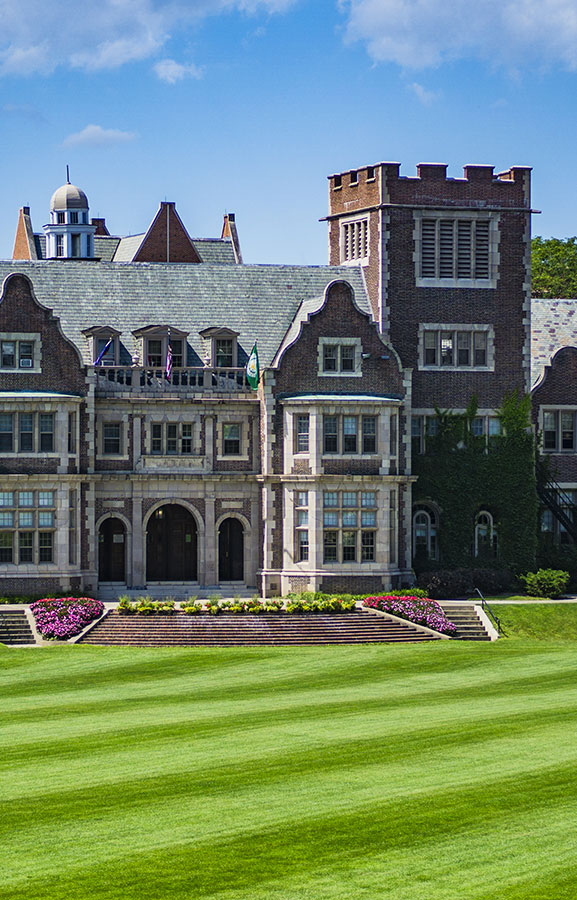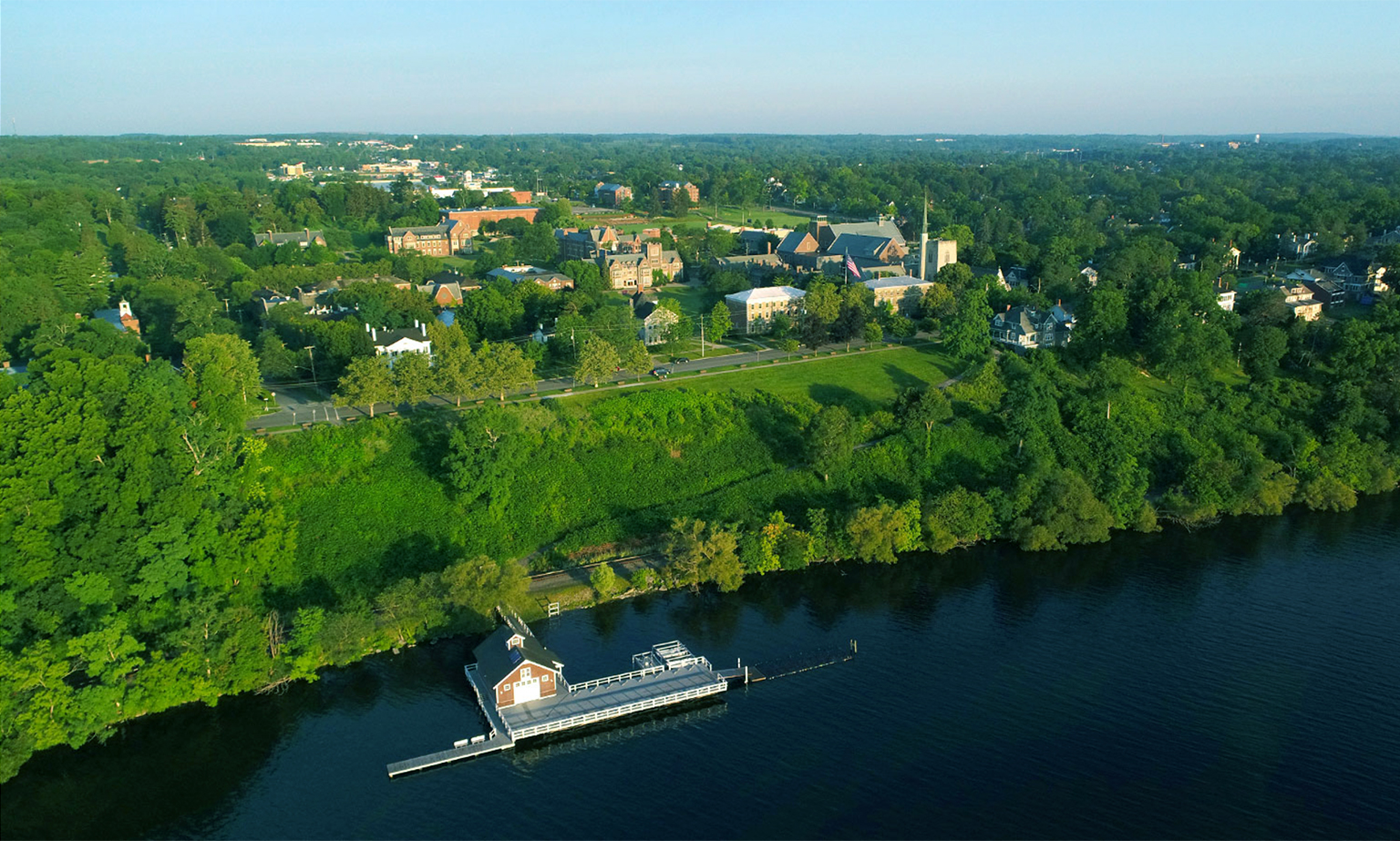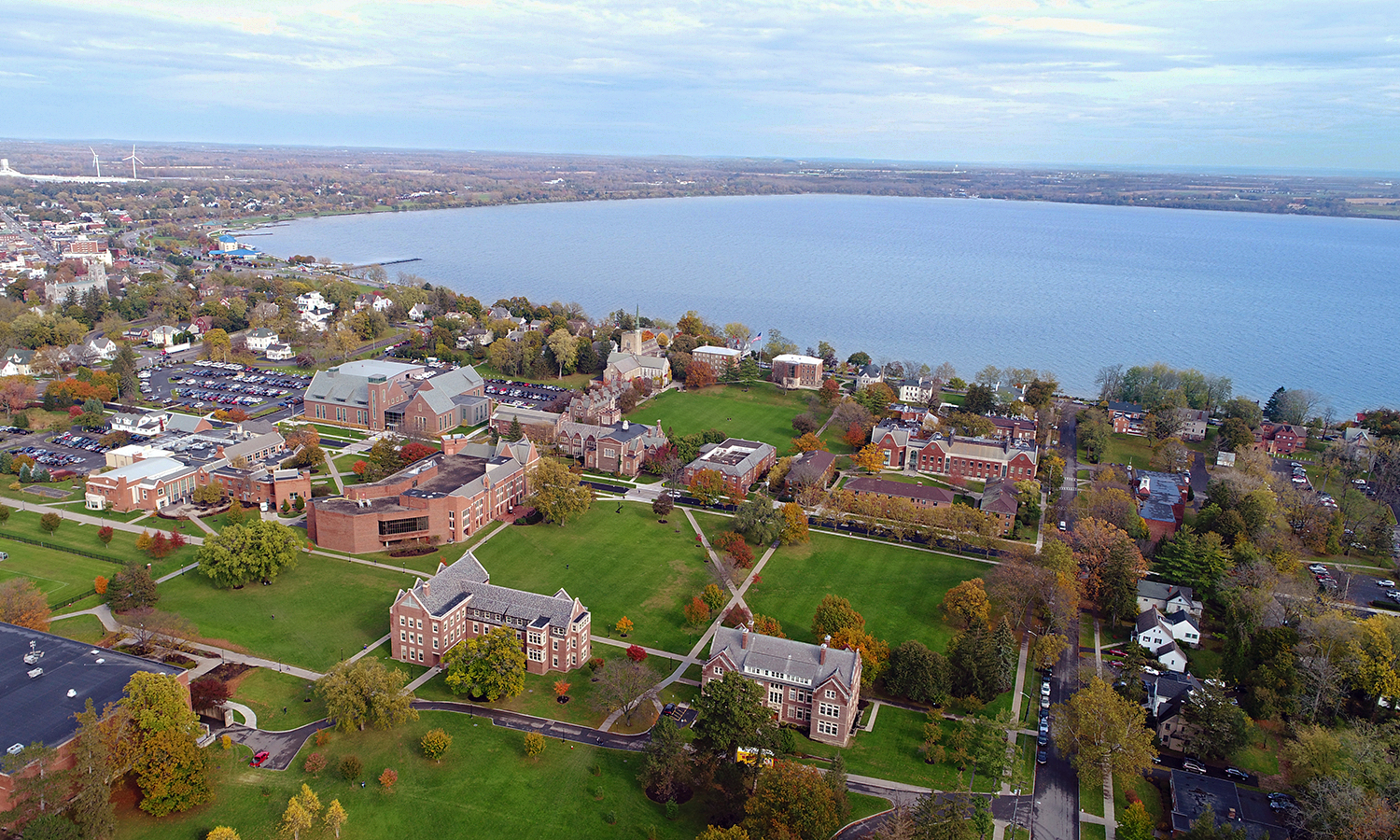
Strategic Plan
Introduction
As Hobart and William Smith Colleges approach the celebration of 200 years of innovation and excellence with the bicentennial of Hobart College in 2022, we do so at a pivotal moment in the history of American higher education. Increasingly, how colleges and universities imagine their futures is influenced by the demographic shifts of college-bound students, and the growing pressure for student-responsive institutions to provide universal access at a time when a top-quality liberal arts education is more expensive than ever.

The history of Hobart and William Smith, however, is one marked by perseverance and tenacity in the face of similar challenges. Through world wars, conflicts, pandemics, depressions and recessions, industry upheavals and technology transformations, Hobart and William Smith have survived, prospered and continued to fulfill their promise and purpose. We intend to continue to thrive as we begin our third century
Survival without evolution, however, is uninspiring. The Colleges therefore must continue to adapt to new currents in society and in higher education even as they hold true to their fundamental purpose of providing a life-changing education to students and preparing them to become life-long learners who continue the practices of critical examination and searching for truths. Hobart and William Smith also must continue to stand for willingness to engage in dialogue, treating all with dignity and respect, and working toward a better world, principles that can be traced back to the Colleges' Episcopalian roots even as they address secular concerns. These are principles worth preserving and upholding, particularly in a complex world where the continuation of ideals such as these face many current and developing threats.
The Colleges' history features just this sort of necessary innovation and reflection. Strongly influenced by the birth of the American suffragist movement just a few miles from campus, Hobart and William Smith were among the first institutions in the nation to educate women broadly rather than vocationally. Our curriculum, which has evolved over the decades to educate students to be leading thinkers across a wide range of disciplines and interdisciplinary areas, has remained bold and inclusive; we were the first in the nation to have an LGBT undergraduate program and among the first to offer majors and minors in Black Studies, Men's Studies and Women's Studies. More recently, the Colleges have created new models of delivering a liberal arts education by pushing geographic boundaries through our nationally recognized global studies program, critically addressing concepts of inclusion, gender and difference through our coordinate tradition, and requiring our students to consider their responsibilities to community and the public good through our emphasis on engaged citizenship. These and other accomplishments are the result of deliberate, thoughtful strategic planning. We continue that tradition with this newest phase in development of our strategic planning direction and process.
Our goal now is to face the future with clarity and a renewed and reinvigorated commitment to excellence. We will accelerate our progress by continuing to attract and retain students, faculty and staff of high character, tenacity and intellectual agility by building an exceptional academic, reputational and financial foundation. We will increasingly meet the academic, social and financial needs of students as we also continue challenging them to lead lives of purpose and meaning—lives of consequence.

Hobart and William Smith
Enhancingthe Colleges'Reputation
In order to attract and retain the best students, faculty and staff, and to continue to draw philanthropy that allows the Colleges to offer exceptional access to a Hobart and William Smith education, we must enhance our reputation in the marketplace. Reputational improvements will make it possible for us to continue an ongoing positive dynamic of attracting an exceptional student body and set of faculty and staff as we provide an ever-higher, value-added educational experience for students, and an enhanced work experience for faculty and staff. Success and positive thinking will lead to more success and positivity. An enhanced reputation will increase our ability to provide academically effective programs on campus, lead to increased return on investment, and make it easier to attract additional financial support from our donors — individuals as well as foundations. While we are firmly in the top 100 national liberal arts colleges, our goal is to rise substantially in reputation within this group.
Aspects of this thematic area include:
- Evolving the value proposition of the Colleges to articulate the key benefits of the Hobart and William Smith education and the distinctive offerings that set HWS apart from competitive alternatives.
- Articulating the substantial return on investment of the Hobart and William Smith education.
- Completing a comprehensive branding study and conveying the findings across all assets.
- Redesigning our admissions and advancement materials, our website and our signage to reflect our clarified branding. Ensuring that all departments across campus adhere to new branding standards.
- Continuing to refine and update our traditional media and social media approaches to reach a wide audience.
- Building our academic reputation through outreach to other colleges and universities as well as to individuals, foundations and government entities.
- Promoting our excellent athletics teams and their successes while reflecting our new branding identity.
- Continuing our focus on and commitment to global education as one of our primary strengths, even as we also highlight our location in the Finger Lakes Region and the accompanying opportunities such as the Finger Lakes Institute as another of our primary strengths.
- Identifying and highlighting our other unique and growing student programs, such as debate and e-sports.
- Providing necessary resources to faculty, staff and students to increase their engagement with colleagues at other institutions of higher education.
- Formalizing faculty and staff recognition programs that include highlighting their research, grant awards, and professional achievements in higher education journals, newsletters, and online platforms.
- Creating and distributing focused recruitment materials for prospective faculty and staff.
- Improving our record in attracting and retaining a diverse set of faculty, staff and students and underscoring our commitment to diversity and inclusion.
- Investing in technology infrastructure and tools that support and enhance the academic and residential experience across the campus and beyond.
BuildingFinancial andOperational Excellence

In order to be academically effective and strengthen our reputation, the Colleges need both to garner more resources and to manage the ones that we already have with close attention to cost containment, net revenue generation and fundraising from a variety of sources (individuals, foundations and government sources). Toward this end, we will launch a comprehensive capital campaign to support the three themes of strategic engagement and articulate specific ways in which donors can support those themes. Through increasing our endowment, we will reduce our dependency on tuition and be able to support a wider range of opportunities for our students. While a specific endowment goal will be articulated in the campaign documents, it is clear that for us to rise from the 80th percentile up into the top decile of liberal arts colleges, we would need to double our current endowment level within the next ten years. Increased and more stable finances along with improved operational efficiency will make it easier for us to support academic effectiveness and will improve our reputation.
Aspects of this thematic area include:
- Developing, launching and successfully completing a comprehensive capital campaign that will provide fuel for a variety of initiatives under all three themes of engagement.
- Resetting the financial foundation of the Colleges so that Hobart and William Smith can mitigate the impact of the trending demographic disruption in the size of the college-age student cohort while continuing to focus on providing an excellent education.
- Increasing our financial aid resources to better meet the demonstrated need of our students and ensure that those students who will benefit greatly from attendance here are able to afford to come and to stay at the Colleges.
- Maintaining reasonable tuition and room and board rates that allow the Colleges to be accessible to all students. It is important that we monitor affordability constantly so as to make it possible for students from all socioeconomic classes to attend the Colleges, including students from both low- and middle- income family backgrounds.
- Achieving and maintaining appropriate market-sensitive faculty and staff total compensation levels to support our academic and operational effectiveness and reputation.
- Redeploying resources to invest in those faculty, staff, areas and activities that most directly and strongly support our value proposition.
- Supporting faculty and staff professional and skills development to enable all employees to be more innovative and to effectively implement best practices.
- Providing information technology systems, solutions, services and training that make it easier for our faculty, staff and students to get things done cost effectively and efficiently.
- Where possible and feasible, engaging third party vendors to provide (or support) auxiliary services to the Colleges as we have done with food services, buildings and grounds, the bookstore and student health center.
- Continuing to evolve the HWS culture to one that is even more deliberate, inclusive, urgent, cost- conscious, outcome oriented and decisive.
- Developing a comprehensive facilities management plan that integrates both sustainability and accessibility considerations into our daily routines, including continuation of our plans to achieve carbon neutrality by 2025.
- Coordinating and integrating planning processes – strategic planning, budgeting, talent management, master planning/capital allocation and curricular planning – to ensure the highest and best use of resources.
- Commencing a new assessment process in which senior staff will develop their own annual and long- term goals to be consistent with the three themes of engagement, as well as making sure that those reporting to them also develop their goals and carry out their work so as to be supportive of and consistent with these themes.
- Creating an ongoing program to fund innovative projects as pilots and evaluate them for permanent integration into our structure. The dedication to ongoing innovation must become a part of the HWS DNA. The following section outlines how we will identify, vet, and manage projects going forward.
StrategicVettingProcess
An integral part of the overall strategic planning process is a clearly articulated method for the day-to-day vetting, development and implementation of new projects (for details, click here). We intend to develop new projects that support these three themes within a rolling or iterative timeline, initially prioritizing tasks within an 18-36 month period.

Coxe Hall
The objectives of the project planning process are to:
- Implement a structured process for vetting and selecting strategic projects
- Ensure financial and human capital resources are optimally allocated
- Avoid wasted effort and time on ideas that do not have strategic relevance
This process, comprised of five distinct phases with clear objectives, deliverables and exit criteria for each, will allow us to work on the right projects at the right times with the right resources.

Distinguishing attributes of this process are:
- Utilization of a Coaching Model for vetting ideas and developing project justification
- Adaptability and Customizability to a wide range of potential projects
- Flexibility to integrate with existing governance, planning, and budgeting processes
Prior to starting the process, a set of 4-6 coaches will be identified and trained by the VP for Strategic Initiatives so that they provide appropriate advice, including stressing the importance of alignment with the overall strategic plan. Additional high-level criteria will be developed prior to starting the process and refined over time, with the coaches participating in the development of criteria along with senior staff. Strategic Projects Coaches will be staff or faculty who are one level down from senior staff who will provide confidential advice in the initial discussion stage.


